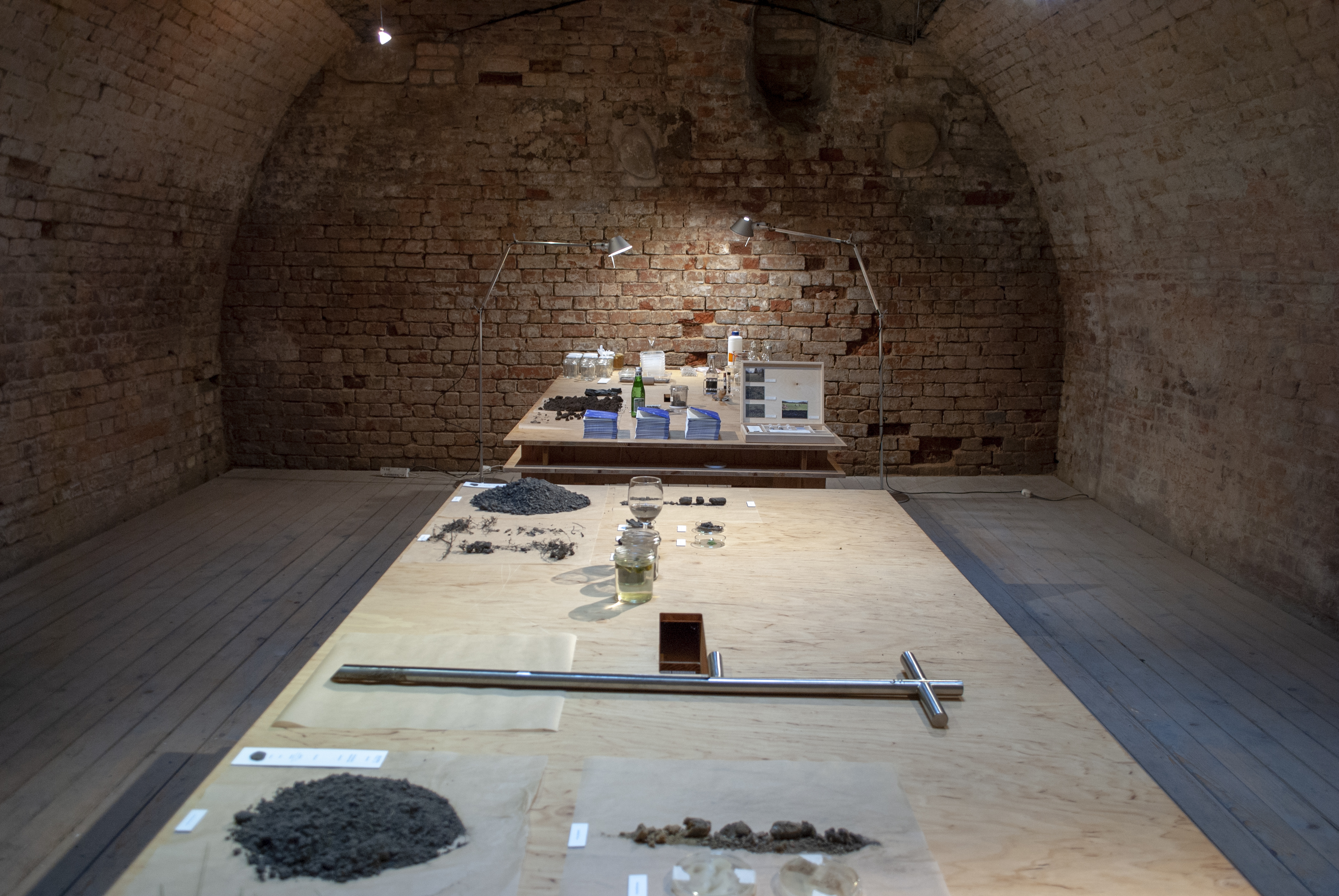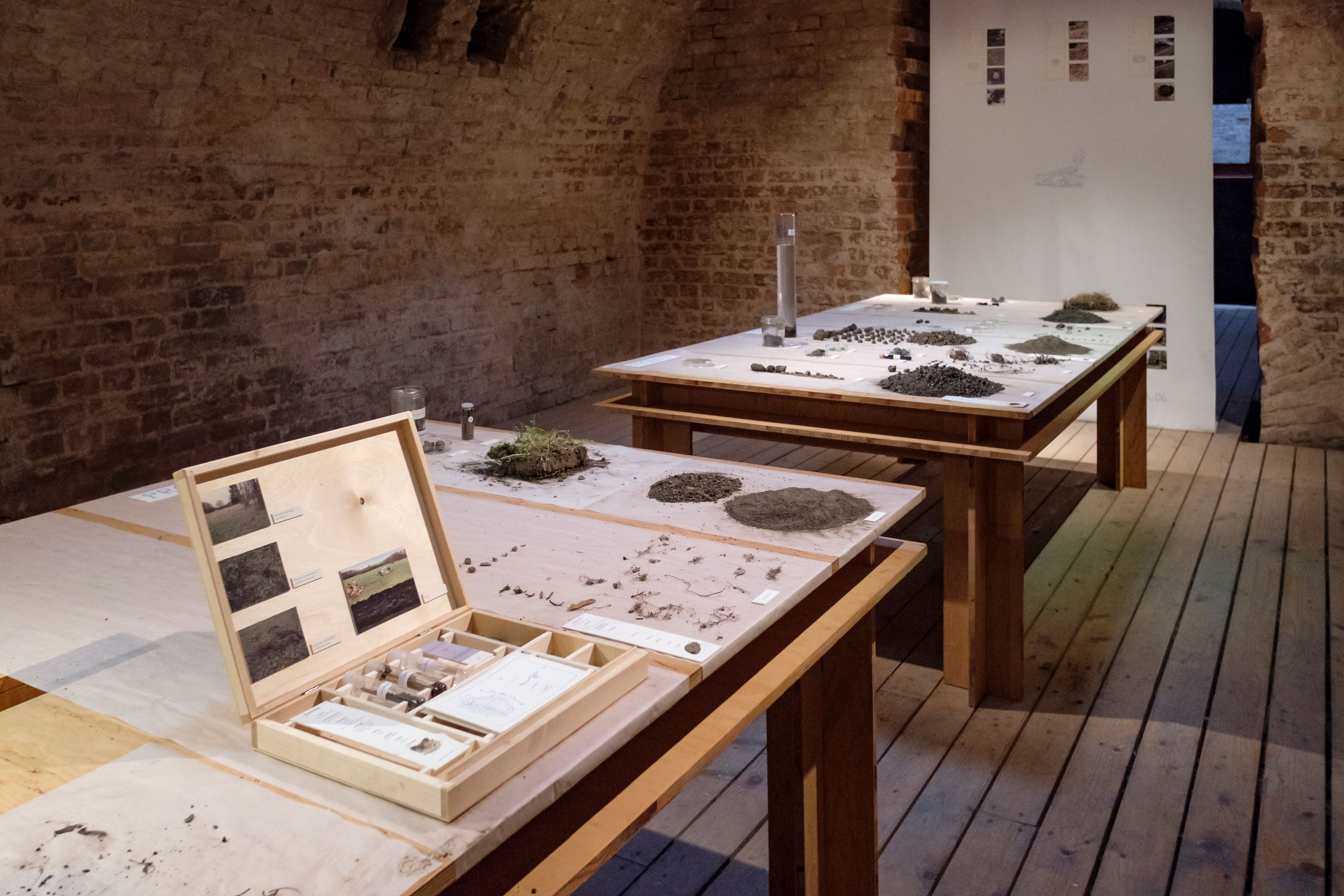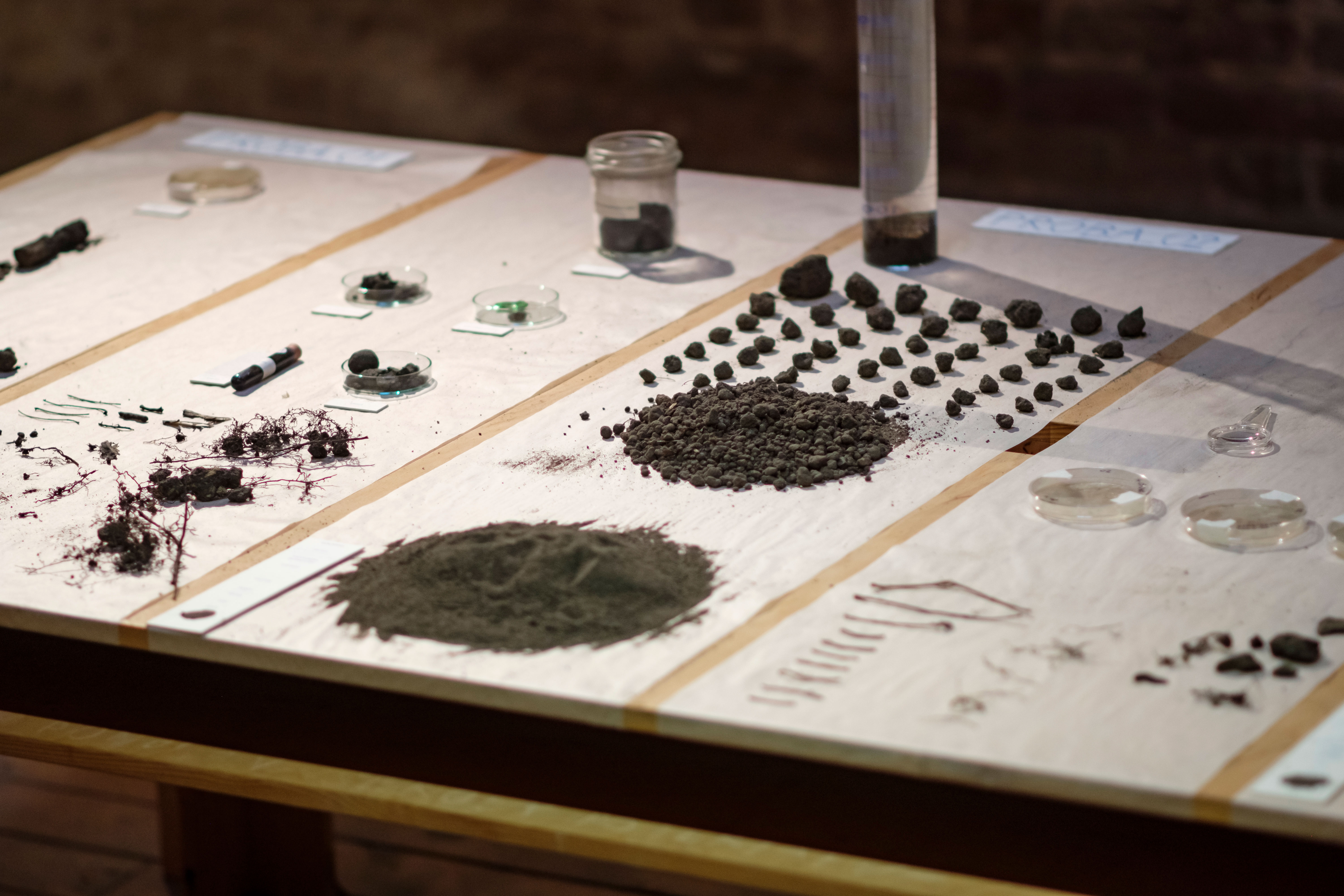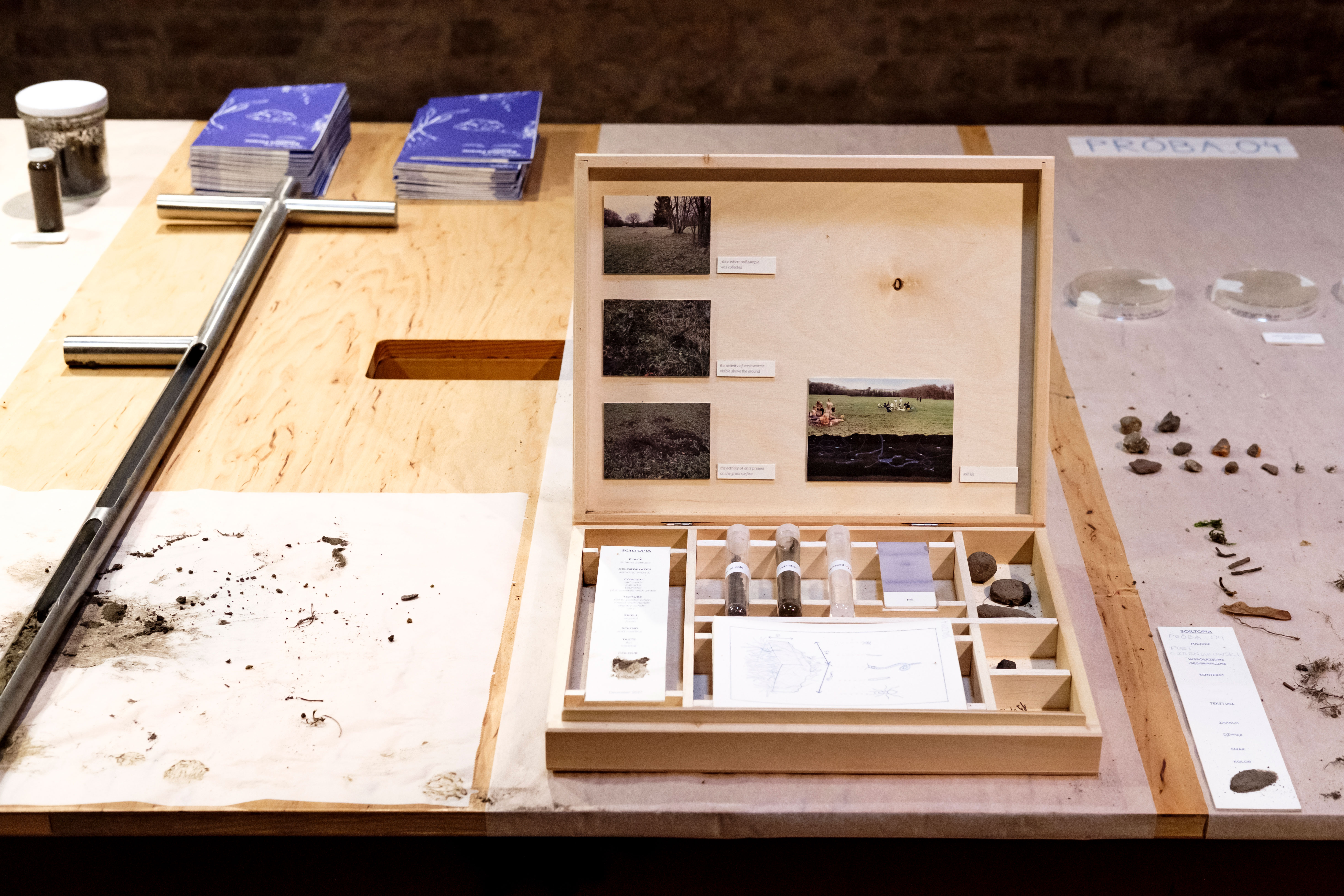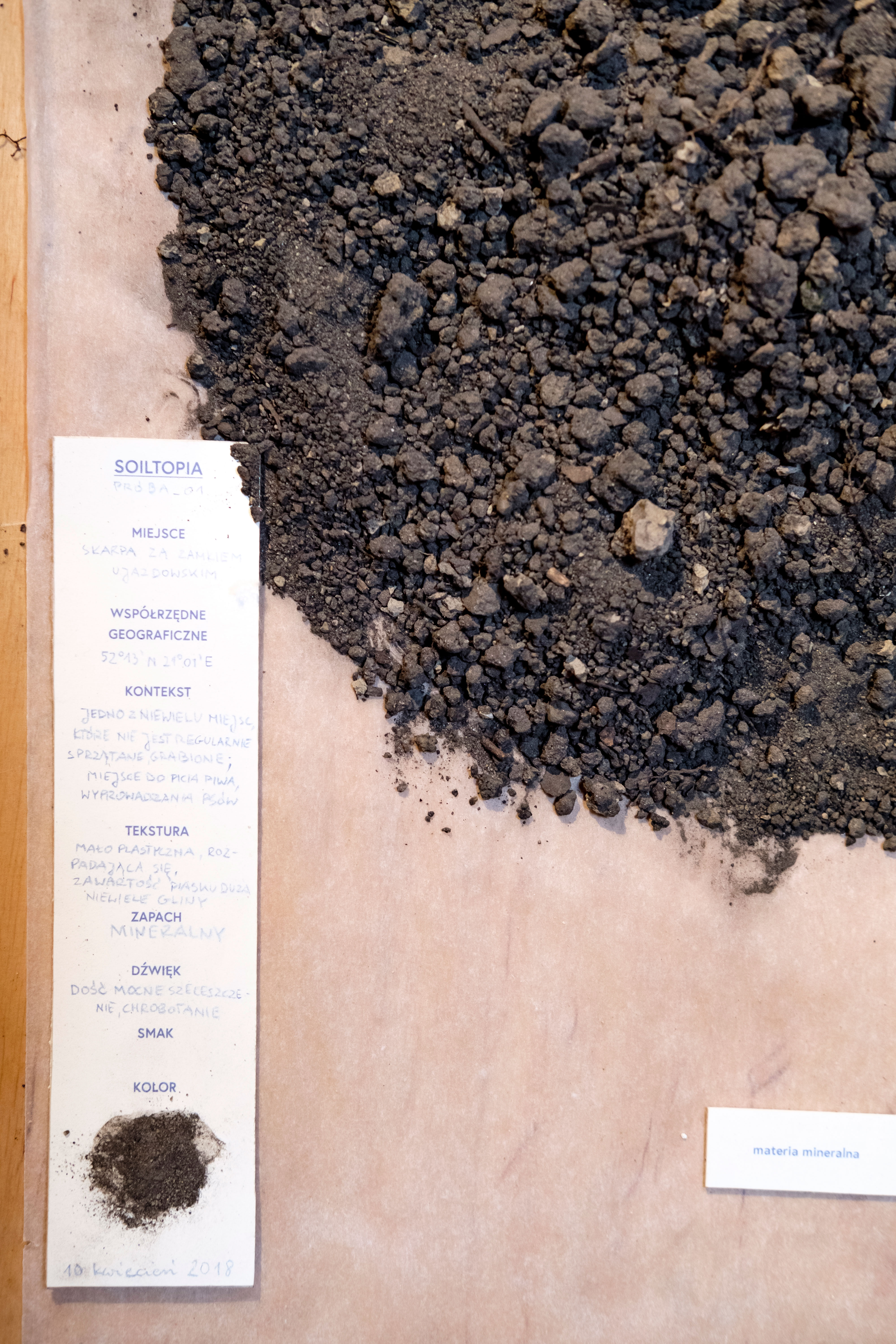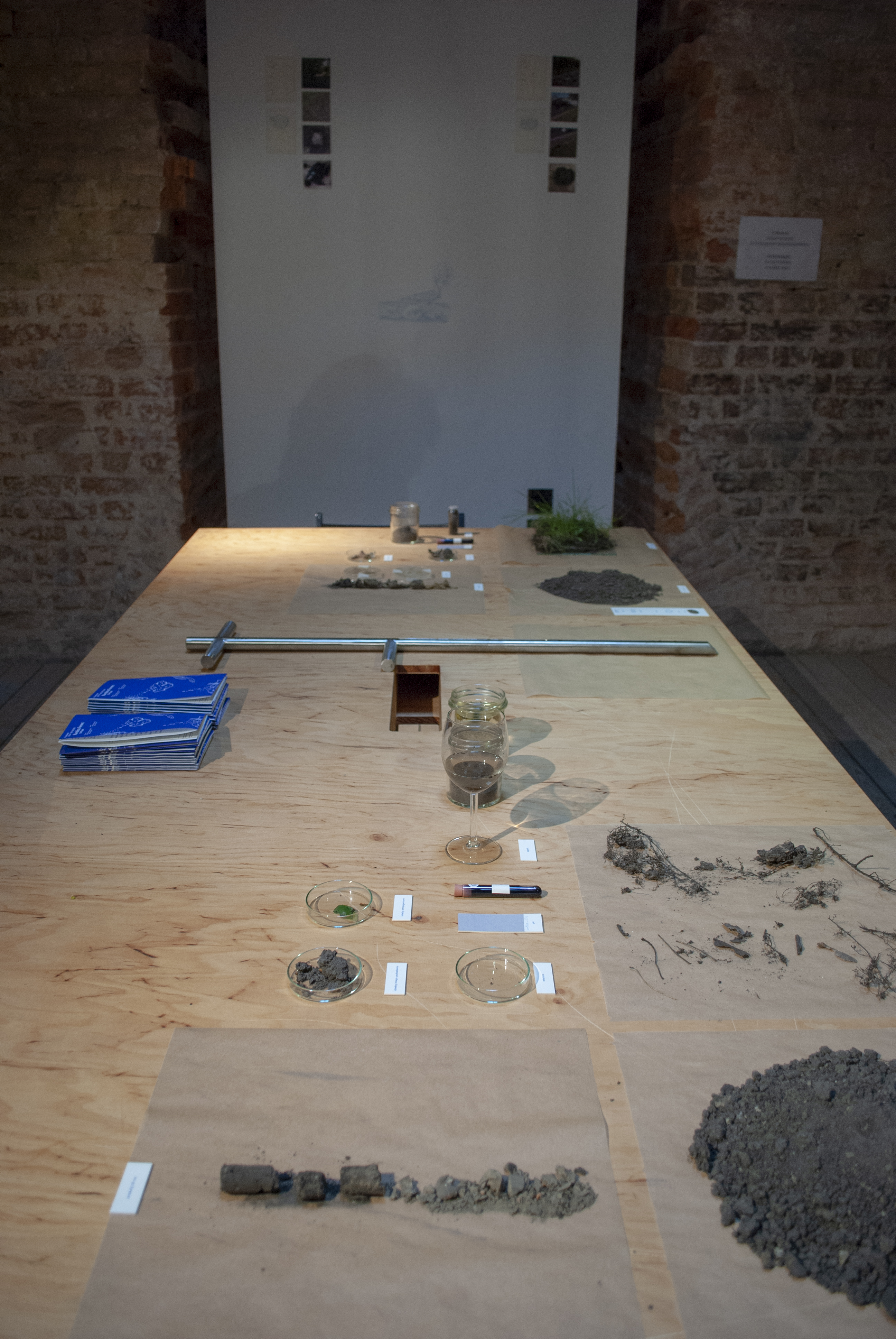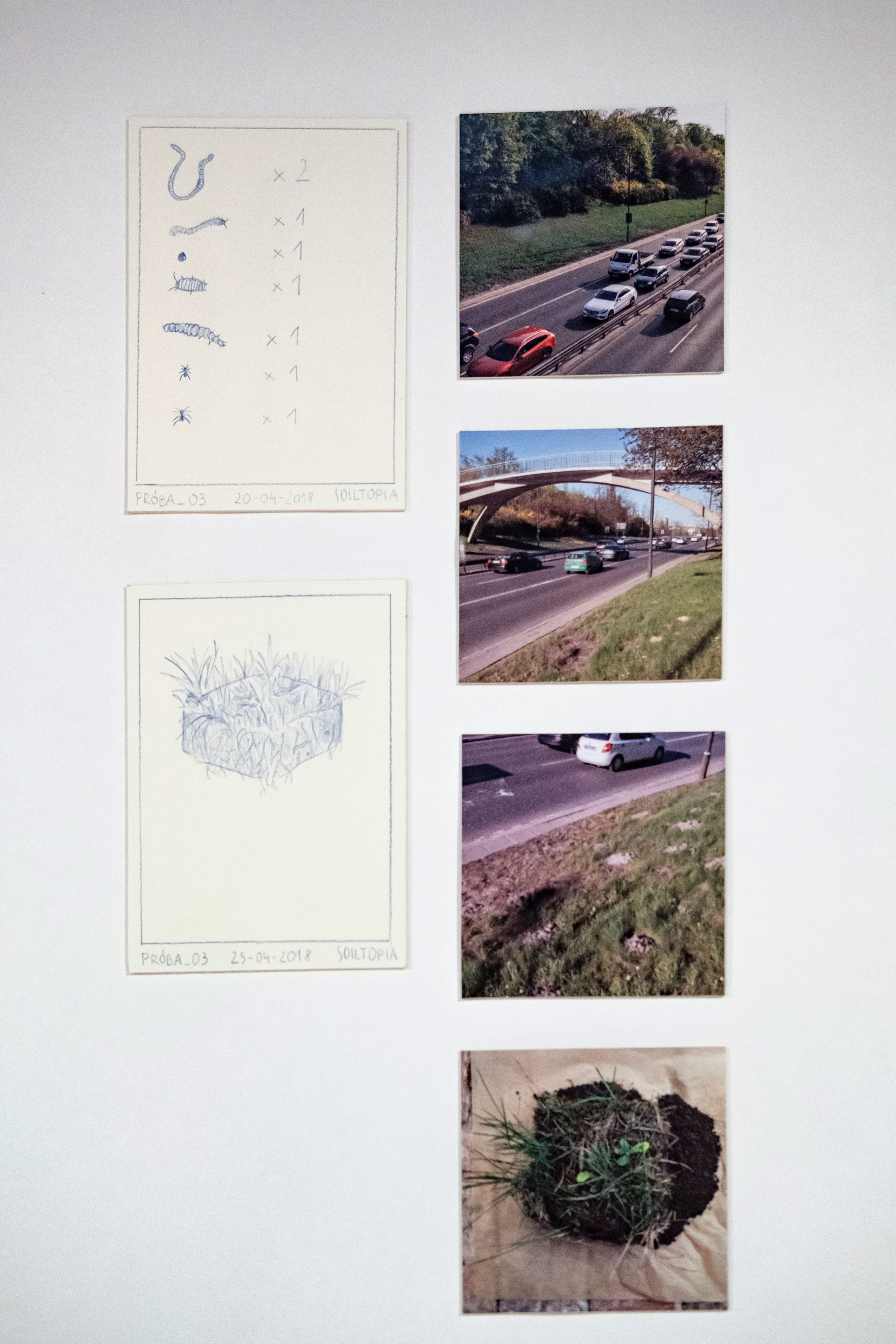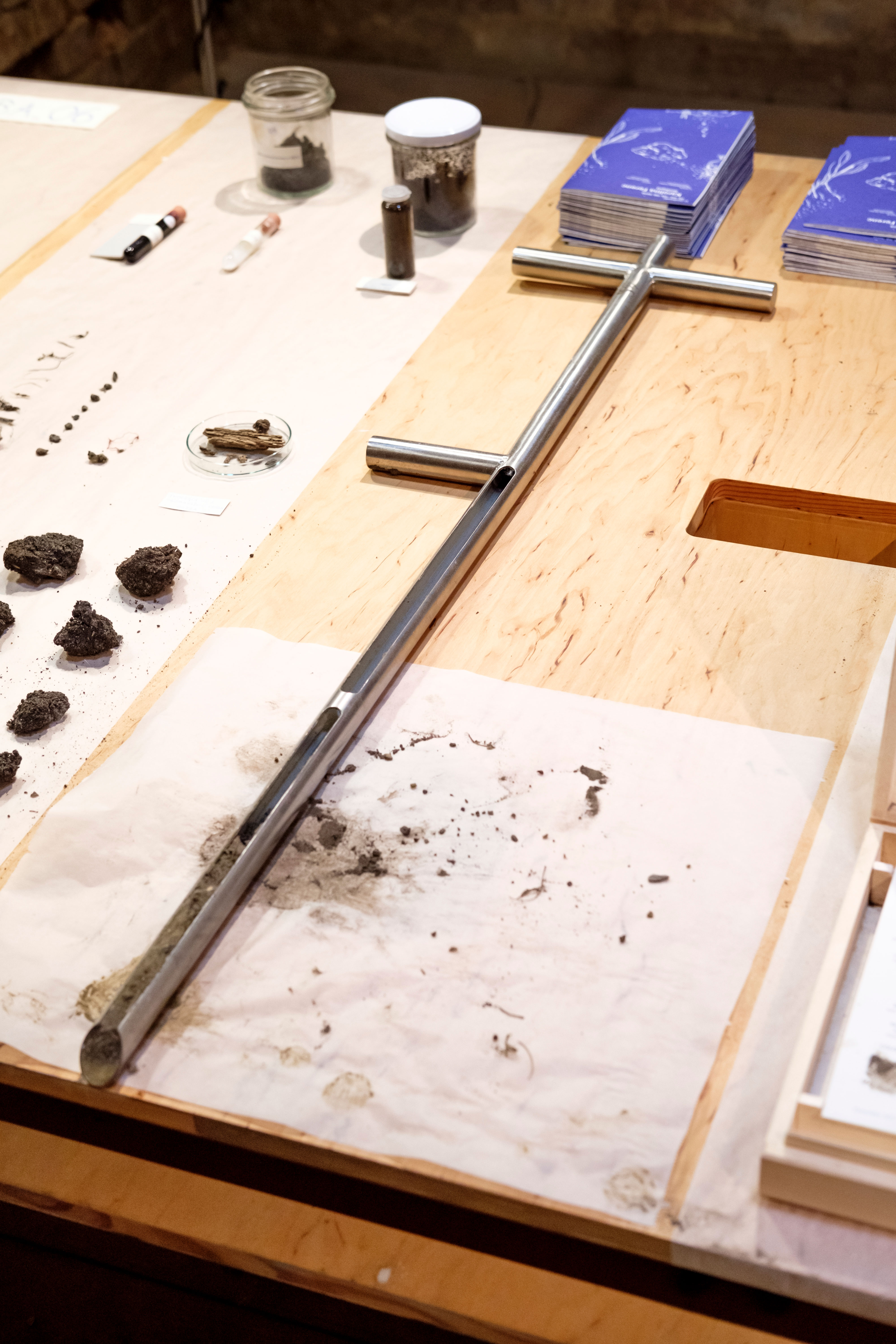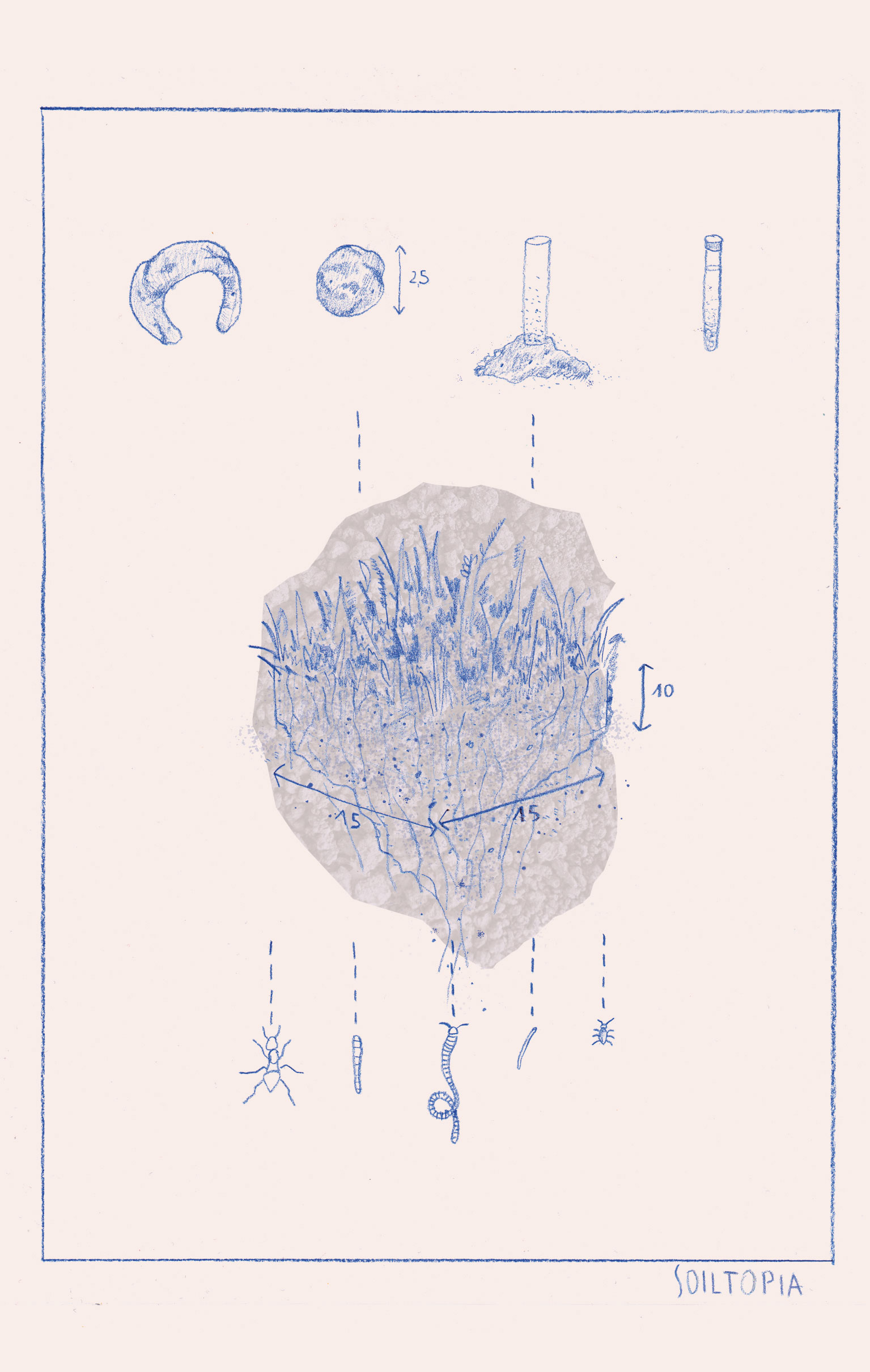
Soiltopia
project duration: 28/04 - 08/06 2018
location: Cistern in front of the Ujazdowski Castle
Soil, along with its partners air and water, is the foundation upon which
modern society is built and upon which it is utterly dependent. Soil is our
dumping ground and our redemption. Ignored, contaminated, compressed,
and dormant, the dirt that waits patiently in vacant lots—and that underlies
our urban sidewalks, roads and buildings—contains the potential not only for
its own miraculous biological renewal, but for the regeneration of many of
our depleted social, economic, and material structures.
Nance Klehm, ’The Ground Rules Manifesto’, 2015
During her artistic residency at the U–jazdowski, Karolina Ferenc invites us
to her paralaboratory where every day she is going to perform and conduct
experiments making use of the various types of soil we can come across in
the vicinity of the Ujazdowski Castle.
Soil is an ecosystem consisting of rock pieces, decaying organic matter,and
living organisms. Besides, soil includes water and air. Not all of that is visible - let’s take soil microbiome consisting of bacteria, fungi, protist and viruses:
even though the importance of this invisible world has been recognized already
a hundred years ago, still most of the soil microorganisms haven't been fully
described.The artist’s aim is to show, in an interesting and imagination-
stimulating way, the most crucial characteristics of living soil, "living soil"
meaning one that has not becom barren due to human activity and is still
inhabited by uncountable microorganisms. Soils are not generally considered living organisms, but just a static, passive
medium: a resource we can endlessly take advantage of, says Karolina Ferenc,
and yet soils are homes and <<collaborators>> to numerous animal, insect and
fungi species; to plants and bacteria. The soil plays host to human activities,
it is a reservoir of biodiversity and traces of the past. With the use of
instruments of her own design, Ferenc is going to conduct a number of
activities with the common aim to provide data on specific types of soil: their
smell, taste, texture, or colour. In her project the artist draws on scientific
research, since science is one of the prime means of analysing and
understanding the world. Still, her activity as a soil researcher goes beyond
the pragmatic, scientific-experiment-based approach. One of the crucial
purposes of the latter is to determine if a terrain is suitable for cultivation;
Ferenc, on the other hand, wants to provid her audience with a more profound experience, let her guests enjoy sensory, emotional,imaginary, and speculative stimuli. Her experiments are intimate and at the same time somewhat playful.
The spot where Karolina Ferenc will carry out her project has not been picked
at random. The cistern, located below ground level, is a revitalised component
of th former castle waste pond ("the castle's intestines"):a fragment of
the sewage system of Ujazdowski Hospital which existed here back in the 19th
century.
Project Soiltopia is a part of the program of
the Jazdów City Garden.
Ujazdowski Castle website
photos: Bartek Górka
words: Ika Sienkiewicz-Nowacka
